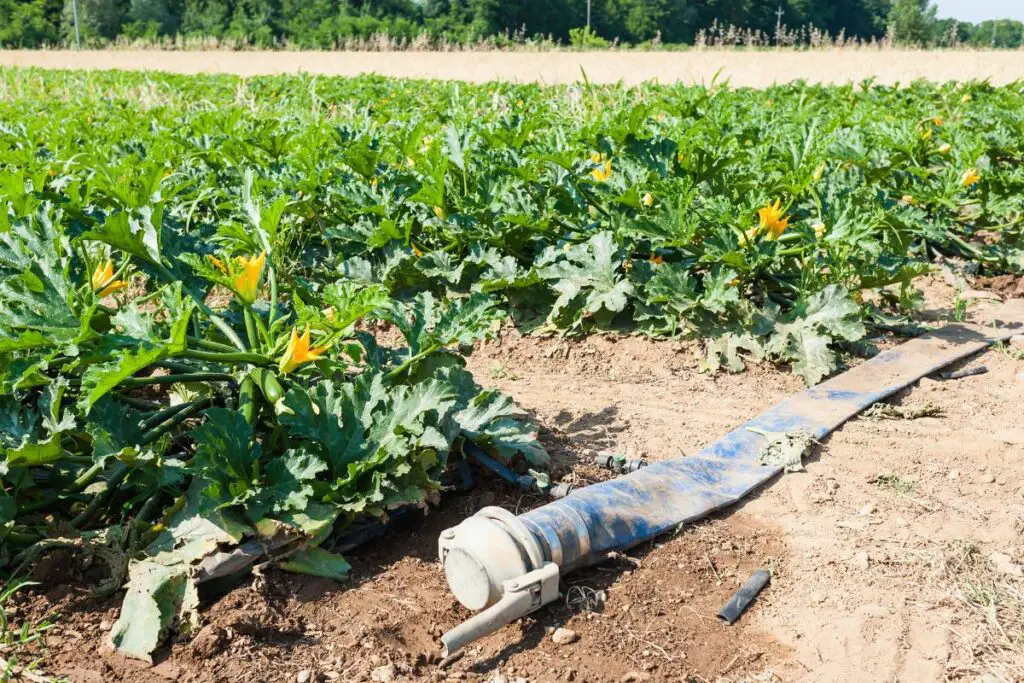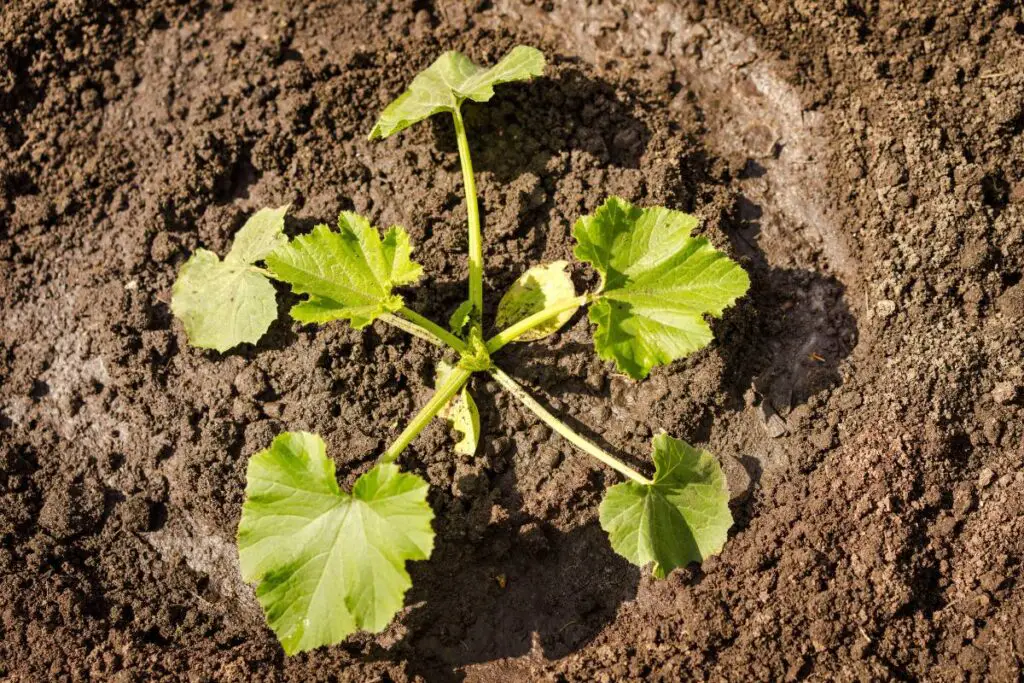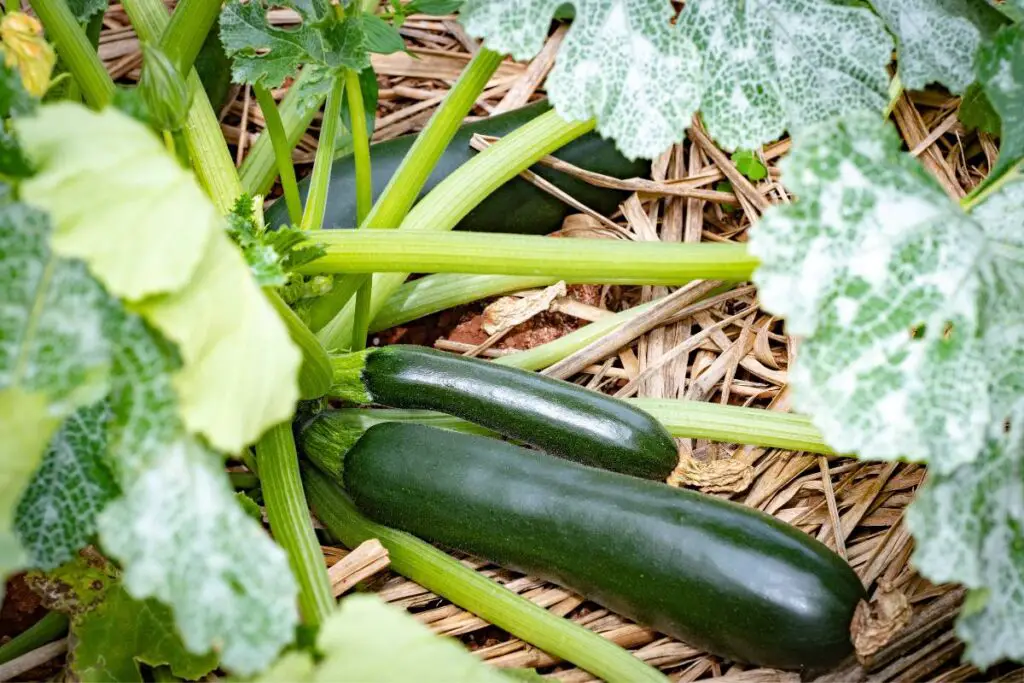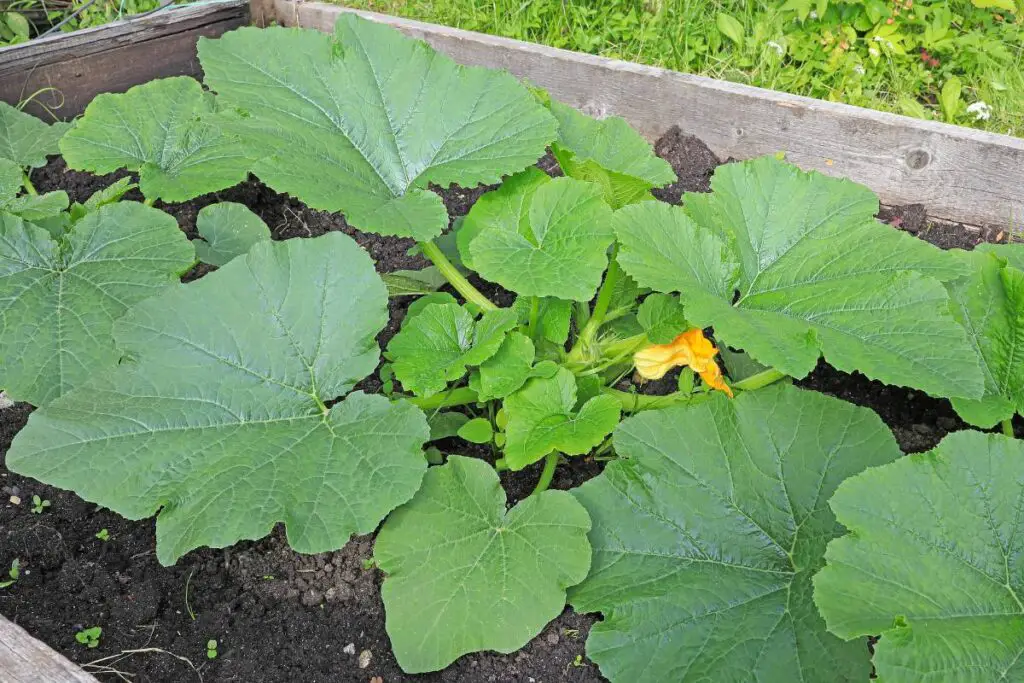Zucchinis are famous summer squash vegetables that are easy to grow, like cucumbers. It belongs to the Cucurbitae family and requires adequate sunlight, water, and fertilizer. But how much sunlight is enough for zucchinis?
Zucchinis prefer around 6-8 hours of sunlight daily for their best growth and performance. Find a spot for the vegetables that receive full sun exposure. While low light can affect plant growth, excessive exposure does no good. So, make sure your plants are not exposed to excessive direct sun.
This article has all information about the sunlight requirements for Zucchinis. By the end of the article, you can gather vast knowledge about their sunlight needs and where to grow them for optimal sunlight.

Understanding the sunlight requirements of Zucchini plants
Zucchinis belong to the Cucurbitae family and are a popular squash vegetable grown mainly in the summers.
They love warm weather and consistently moist soil.
Zucchinis grow best under 6 to 8 hours of full sun daily.
It grows best in areas with a long season, like California and Florida.
The ideal spot for the zucchinis should be a place that receives full sunlight exposure daily.
In my garden, I have them grown on the southern side of the garden, against the south-facing wall.
In this direction, there are some tall trees as well.
However, Zucchinis do not mind them as they do not entirely block the sun.
This side of my garden receives adequate sunlight throughout the day, and the tall trees can provide some shade which is beneficial in summer.
Thus, my zucchini plants are thriving.
However, sunlight is not the only thing that has kept them alive.
Additionally, adequate water, fertilization, and temperature are also essential.
Some zucchinis can also grow under partial sunlight.
In that case, you must at least let them have 4 hours of direct morning sunlight daily.
Importance of sunlight for the Zucchini plants: Exploring photosynthesis and plant development
Sunlight is essential for all plants, and Zucchinis are no exception.
It is one of the most important resources for the plant’s healthy growth and development.
Sunlight provides energy for photosynthesis, a process where plants can convert light energy into chemical energy and fuel their growth.
An optimal amount of sunlight will help the plants produce leaves, flowers, and fruits.
Without this light, plants become weak and stunted. They do not produce any fruits and flowers and ultimately end up dying.
Additionally, sunlight helps produce chlorophyll, encouraging the plants to grow large green leaves.
Furthermore, adequate sunlight regulates the plant’s internal temperature and reduces moisture levels to prevent fungal diseases.
It is useful when the plant receives too much moisture.
For all these reasons, a sufficient amount of sunlight is significant for the zucchini plants.
Ideal sunlight conditions for zucchini plants
When we talk about the ideal amount of Zucchini plants, there are several things to know about it, for example, the sun intensity, duration, and direction.
Duration
We already know the duration.
You must ensure that the Zucchini plants receive at least 6 to 8 hours of sunlight daily.
You can even let the Zucchini plants receive partial sunlight.
However, that does not mean the plants can grow under partial sunlight throughout the year.
Even with partial sunlight exposure, the plants must receive at least 4 hours of direct sunlight daily. The remaining sunlight can be indirect.
It is useful when the summers are too hot to handle.
At the same time, do not expose Zucchinis to direct sunlight for more than 8 to 10 hours.
The extreme heat and intensity will weaken and damage them.
Intensity
Both low and extreme sunlight intensity is bad for the Zucchini plants.
There is no exact intensity level for the zucchini plants.
Generally, 6 to 8 hours of sunlight should be enough for them.
The sun intensity can vary based on your living region and the climatic conditions.
The average intensity level is 60k in full sun, 35k in medium sunlight, 15k in partial sunlight, and 1k to 5k in low lights.
Based on these features, I can suggest that the required sun intensity level for the zucchini plants ranges between 35k to 50k lux.
However, 15k to 35k would be best for all vegetable plants, including Zucchinis.
Ensure they receive at least direct sunlight for 4 hours daily.
Direction
The direction of sunlight for the zucchini plants does not matter much.
Wherever you are planting the Zucchini plants, you should ensure they receive sunlight from every direction.
It should not be that only the front side of the plants receive sunlight, and some buildings, trees, or walls completely shadow the backsides.
Another thing to consider is the planting spot.
The southern side of my garden receives the maximum sunlight in my region.
Based on your living region, find out which spot seems suitable for zucchinis and plant them there.
Looking for gardening supplies? We have tested 100's of products before recommending them to you guys. Check out our best pick below:
| Image | Gardening Supplies | Best Price? |
|---|---|---|
 Top
Top Top
Top | Raised Garden Bed Kit | Check On Amazon |
 | XLUX Soil Moisture Meter, Plant Water Monitor, Soil Hygrometer Sensor for Gardening, Farming, Indoor and Outdoor Plants, No Batteries Required | No Results |
 Top
Top Top
Top | 82 Pcs Garden Tools Set and Extra Succulent Tools Set | Check On Amazon |
 | Joeys Garden Expandable Garden Hose with 8 Function Hose Nozzle, Lightweight Anti-Kink Flexible Garden Hoses, Extra Strength Fabric with Double Latex Core, (50 FT, Black) | No Results |
 Top
Top Top
Top | Dual Chamber Compost Tumbler | Check On Amazon |
 Top
Top Top
Top | Sunnyglade Plant Stakes | Check On Amazon |
 Top
Top Top
Top | Organic Cold Pressed Neem Seed Oil | Check On Amazon |
 Top
Top Top
Top | Mighty Mint Gallon :-Insect and Pest Control Peppermint Oil | Check On Amazon |
 Top
Top Top
Top | Scotts DiseaseEx Lawn Fungicide | Check On Amazon |
 Top
Top Top
Top | Jacks Classic 20-20-20 All Purpose Fertilizer | Check On Amazon |
 Top
Top Top
Top | 30,000 Seeds Pollinator Attracting Wildflower Mixture | Check On Amazon |
 Top
Top Top
Top | Survival Vegetable Seeds Garden Kit-Over 16,000 Seeds | Check On Amazon |
Assessing sun availability

When you grow Zucchinis outside, plan to find a suitable location first for them.
While finding the right location for a Zucchini plant’s sun requirements, check the sunlight duration and orientation, the obstructions the plants can receive, and the amount of shade it will receive.
Besides these factors, you also need to consider your garden’s microclimate and the seasonal changes in your region.
Let’s talk about these factors in a bit of detail:
Sun duration
For Zucchinis, the correct sun duration is 6 to 8 hours.
Before planting the Zucchinis, ensure your garden can provide this much duration.
If not 6 to 8 hours, ensure they receive 4 to 6 hours of sunlight.
It is the minimum range Zucchinis need for their optimal growth.
Not all directions will provide adequate sunlight.
So, find out which direction of your garden is open and receives 6 to 8 hours of sunlight daily.
Shade
Along with the sunlight duration, you must consider the shade.
Find out which side of your garden can provide shade and how much.
Avoid the spot that receives too low sunlight.
Zucchini plants will require full sunlight.
Low light will hinder the plant’s growth and development.
If you live in a hotter zone, the sun’s intensity will be too much during the summer.
In that case, you can find a location that receives some shade during the hottest time of the day.
For this, you have to look at the orientation.
Sunlight orientation
Before you plant Zucchinis, find the sun’s travel direction in your garden.
Zucchinis grow at their best when they receive direct sunlight during the morning and early afternoon.
Monitoring in which direction the sun travels and at what time can give you a rough idea about which spot should seem best for zucchinis.
Find a place where the garden receives 6 to 8 hours of sunlight daily.
If you live in a hotter zone, monitor the sunlight and find a location that receives direct sunlight throughout the day and some shade in the summer afternoons.
Obstructions
Tall trees, buildings, and walls can restrict the sunlight from reaching the Zucchini garden beds.
Ensure that the spot you choose for the zucchini plants is free from obstructions.
If it is impossible to remove the obstructions, ensure that the plants receive at least 4 to 6 hours of direct sunlight during the day for optimal growth.
Microclimates
Consider understanding the microclimate of your garden.
Some garden areas can be cool, whereas others can be hot.
Some areas will receive enough airflow, whereas some areas will be congested.
Zucchinis will require warm weather conditions with adequate airflow.
So, plant Zucchinis in the warmest part of your garden and open areas where plants can breathe and get enough air circulation.
Seasonal changes
Check how the sunlight’s availability gets affected by seasonal changes.
For example, the trees obstructing the sunlight from reaching the Zucchini plants are helpful in both summers and winters.
In summer, these trees can block the excessive sunlight from reaching the plants, saving them from heat stress.
When they shed leaves in the winter, your plants can receive direct sunlight throughout the day.
Suppose your Zucchinis are planted in an area that receives direct sunlight.
It can be troublesome during summer as the direct sunlight’s intensity is too high but valuable in winter.
The sun intensity gets lower in winter, and the direct sunlight in the winter can be helpful for Zucchinis.
Anticipating these changes can help you find a location beneficial for zucchinis throughout the year.
Sunlight and Zucchini plant health

Sunlight plays a significant role in the overall growth and development of the Zucchini plants.
Sunlight helps in photosynthesis, one of the most essential processes in plant growth and yield.
It converts the light into chemical energy to produce sugar and other organic compounds, which further help grow fruits and flowers.
The next important thing is chlorophyll production, vital for photosynthesis and leaf pigmentation.
An adequate amount of sunlight will keep the plant healthy and the leaves green.
With healthy plants, you will have big plants with lots of healthy fruits.
Lack of sunlight will lead to chlorosis and reduce fruit production and plant vigor.
Though the plant can survive with 3 to 4 hours of sunlight, it won’t be enough for bud formation.
Every flower will require a specific amount of sunlight and heat to initiate biomechanics.
If there is insufficient bud or flower formation, your plant will not have any fruit growth.
Even if flowers manage to bloom, the number of flowers will be too less, leading to meager yields.
At times, you can spot some fruits. But the quality will not be up to the mark. The fruit will be smaller and won’t taste good.
With optimal sunlight, the plant will encourage bud formation and flowers, through which you will receive lots of healthy and tasty fruits.
Sunlight requirements in different growth stages
Generally, zucchinis need 6 to 8 hours of sunlight.
But their sunlight levels can differ based on their different growth stages.
However, after some research, I found that their sunlight requirements do not differ much during their growth stages, especially when you start them outdoors.
Seeds
When sowing the seeds outdoors, find a sunny spot with well-drained soil and plant the seeds 1 inch deep into the soil.
For multiple seeds, maintain at least 3-4 inches apart.
Cover the seeds with fresh soil.
You must thin out the weak ones when they grow into seedlings and increase the space between the plants.
Sow one seed every 3-4 inches for a row of Zucchini.
Plant 3 to 4 seeds per mound spaced 3 feet apart in low mounds of soil.
Even if you start the seeds indoors, you must keep the germination tray or pot at a location where they receive at least 6 to 8 hours of sunlight daily with temperatures around 60-70°F.
Sometimes, you may not be able to receive direct sunlight for too long hours inside.
In that case, use artificial lights or Grow lights for the germination.
Make sure the light is within 6 inches of the soil surface.
Seedlings and transplants
Those growing outside will need full sun for 6 to 8 hours as they used to from the beginning.
But the seeds you have started indoors may require protection from direct sunlight for the first few weeks after transplantation.
Even though the seeds were kept under the sun for 6 to 8 hours, they will not receive as hard and direct sunlight as the outdoors.
So, when you transplant the seedlings outside, protect them from direct sunlight for the first few days.
Let them have at least 4 hours of direct sunlight per day.
Then, you can provide some shade with a shading cloth.
Water the plant very well to maintain consistently moist soil, not wet.
Vegetative growth
All the Zucchinis that have been started indoors and outdoors will need bright, consistent sunlight for 6 to 8 hours and warmth around 70°F or above.
The plants at this stage will be performing excessive photosynthesis to convert the sunlight into energy and produce flowers and fruits.
You do not have to protect these plants from direct sunlight.
However, some shade can be helpful if the sunlight is too intense during the afternoon.
6 to 8 hours of sunlight is a must for them.
Addressing sunlight challenges
Zucchini plants are summer squashes grown in the warmest time of the year.
So, they require full sunlight to produce optimal yields.
Zucchini plants are tough and, therefore, can tolerate a bit of neglect.
But lack of sunlight is something they won’t withstand.
Without enough sunlight, the plant will produce small or no fruits and flowers.
On the contrary, excessive light is also not good for their health.
Remember that finding a perfect spot for the zucchini plants in all gardens is impossible.
Sometimes, the spot will produce too much light and sometimes little light. At times, you may also get partial sunlight.
You must adjust the lighting according to the Zucchini plants’ needs in such conditions.
You must address two main sunlight-related problems: excessive and low light.
Another situation is partial sunlight.
Partial sunlight would be fine during the hottest time of the day during the summer but not throughout the season.
Let’s talk about these 3 conditions in a bit of detail.
Excessive sunlight
Zucchini loves full sun for 6 to 8 hours daily.
But excessive sunlight is something that even sun-loving plants do not tolerate.
When the sunlight becomes too intense during the hot summer, the plant suffers from heat stress, and the leaves start burning at the tips and edges.
The moisture dries out faster during the summers, and the plant suffers from dehydration frequently.
But you can address this issue by arranging a shade cloth for the plants during the hottest time of the day.
Increase watering during the summers and keep checking the soil’s moisture.
It should be consistently moist.
Add a layer of mulch to prevent the soil from losing moisture.
Low light
Constant low light is not comfortable for Zucchinis.
Since sunlight is one of their key requirements, lack of it would negatively impact their health.
The soil will remain damp, the plant will grow weak and stunted due to the lack of photosynthesis, and there will be no flower or fruit production.
Since pests love warm, moist, shaded places, they will keep visiting.
So, the best solution to low light is prevention.
If you have planted the zucchini plants in a spot that is not providing your plant adequate sunlight, find out the reason behind it.
Is it the sunlight? Or are obstructions restricting the sunlight from reaching the plants?
In either case, it can be tempting to transplant the Zucchini plants to sunny areas.
But that may not be safe as you disturb its roots and the overall development.
It can lead to transplant shock.
That is why preventing a location that gives low light or shade throughout the day is the best key.
Find an ideal spot, analyze and understand whether the plant can get adequate sunlight throughout the day, and then plant the zucchinis.
Will zucchinis grow under partial sunlight?

Zucchini plants are tough plants and can handle neglect to some extent.
Zucchinis prefer full sunlight for 6 to 8 hours daily.
They can also tolerate partial shade to some extent, but not all the time.
Sunlight is one of their fundamental requirements.
The plant’s overall development gets interrupted when you cut out one of the necessary requirements.
Research has shown that the Zucchinis can survive with 3-4 hours of sunlight daily.
Though the plant stays fine, its overall fruit production can be reduced considerably.
That is why constant partial sunlight is not good.
Partial sunlight or shade is ideal when the temperatures cross 100°F, which is common in the summer.
Even if it is summer, the Zucchini plants will still require 4 hours of direct sunlight in the morning.
After that, the plants can stay under some shade.
Complete partial light or shade is harmful to the Zucchinis.
If you have a spot in your garden that receives full sunlight in the morning and some shade in the afternoon, that will work for the zucchinis.
Monitoring sunlight and adjusting care
For healthy growth, you must ensure that zucchini plants receive adequate sunlight throughout the day.
You must monitor the sunlight for the zucchini plants and adjust the requirement according to the plant’s need for optimal results.
Here are the things you should take into account:
- Plant the Zucchini plants in a sunny spot in your garden. Check the sun’s direction and patterns before you plant them to choose the best spot.
- Once you have found an ideal spot, optimize and arrange the plants accordingly to ensure they receive the maximum bright sunlight for 6 to 8 hours daily.
- Leave adequate space between each plant for enough air circulation and avoid shade.
- Monitor the sunlight throughout the year and adjust when the sun pattern changes. For example, if your Zucchinis receive shade from some tall trees, you can trim a few branches to let the sunlight reach the bed.
- You can use shading cloth for plants that receive too much sunlight during the afternoon to prevent sunburns.
- Regularly inspect your plant’s condition to ensure it gets its optimal requirements. If your plant is in a pot, you can rotate it according to the sun’s movements. Please do not change the plant’s location; only rotate them.
Final thoughts
The sun requirement for the zucchini plants is simple. They do best when they receive 6 to 8 hours of sunlight daily. If you think the sunlight is too intense for them to handle, let the Zucchinis have at least 4 to 6 hours of direct sunlight. It can do well under partial sunlight or shade in the remaining time.
Never plant the Zucchinis in a place where they receive shade or partial sunlight throughout the year. Shade can degrade the plant’s health, prevent photosynthesis, reduce yields, and weaken the plant. While partial sunlight can be helpful, it is not good throughout the year. Provide partial sunlight only during the hot summers.
Find a place in your garden that receives direct sunlight throughout the day. Some tall trees would be fine if summer sunlight gets too intense, as they can provide some shade. Along with sunlight, let the Zucchinis have consistently moist soil with warm temperatures around 70-90°F.
Will zucchini plants tolerate some amount of shade?
Shade for a few moments can be pleasing, but it is unhealthy for the plants if it stays for prolonged periods. A bit of shade for a few hours would be good during the summer afternoons, but not at other times.
How do I ensure enough sunlight for zucchini plants?
The best way to ensure optimal sunlight for the Zucchinis is to plant them in a spot where they can get sunlight throughout the day, with some shade in the hot summer afternoons. The plants should receive at least 6 to 8 hours of direct sunlight daily.
Reference: Zucchini Wikipedia
